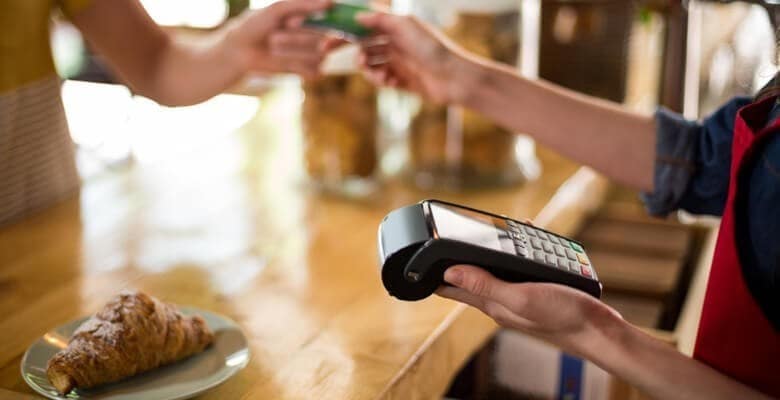Most restaurants have a business profit margin that falls between 3% and 6%, but that number can get up to 10% or more. The profit margin completely depends on the type of restaurant and what it offers.
You can protect your restaurant profit margin by following these steps:
- Become familiar with your profit margin and the inner workings of your business
- Determine your ideal profit margin based on your restaurant
- Reduce labour costs that are over 30%
- Finetune your social media strategy
- Improve inventory tracking methods
- Implement upselling techniques
Let’s go over the definition of a profit margin and how you can determine your restaurant’s current profit margin. We will also share some effective methods to protect your profits, including those listed above, and how to execute each method. We’ll also discuss some dependable ways to increase that restaurant profit margin and restaurant sales over time.
How to Calculate My Profit Margin?
Of course, your profit is what you are pocketing through your restaurant business. Profit is what’s left after you subtract all of your expenses from your gross revenue.
You can look at either your gross profit margin or your net profit margin.
Gross Profit Margin: Calculate your gross profit margin by determining all of your revenue minus the cost of goods sold (the cost of ingredients you used to make those menu items), then divide the difference by the total revenue to determine your margin.
Net Profit Margin: Calculate your net profit margin by considering not only the cost of goods sold, but also operating costs like payroll, taxes, maintenance, rent, and all other expenditures that make your business run. Subtract all costs from your total revenue, then divide net profit by total sales revenue to find your net profit margin. Once you find your profit margin, you are able to calculate your profit margin percentage.
- Gross revenue – total expenses = profit
- Profit / gross revenue = profit margin
- Profit margin X 100 = profit margin percentage
Keep in mind that your profit margin can fluctuate based on food and inventory trends, the state of the economy, etc.
What is the average profit margin percentage for restaurants?
-
Restaurant Type Average Profit Margin Percentage Why Full-Service Restaurants 3-5% A full-service restaurant experience includes table service and more involved customer interactions, which induce greater labour costs. The profit margin percentage will also depend on menu item prices, restaurant size, restaurant location etc. Fast-Casual Restaurants 6-9% Fast food or quick service restaurants involve some level of self-service, like ordering at the drive-thru or walking up to a counter. Due to lower labour costs and pre-prepared food, as well as faster turnover rate, fast casual restaurants have a slightly higher average net profit margin percentage than full-service restaurants. Catering Services 7-8% Catering businesses may have lower overhead costs than a full-service restaurant, but cost of goods is about the same as a full-service restaurant due to few pre-prepared food items.
So now you know – the average net profit margin percentage for restaurants is about 3-5%, but a wider average would show you that it can range from 0-15%. Many restaurant owners are aiming for a profit margin of 5% or higher.
5 Ways to Protect Your Restaurant Profits
Before making moves to boost your restaurant profits, protect the restaurant profits you are already making.

Here are a few tried-and-true ways to protect your current profits:
1. Understand and Monitor your Metrics:
Education is everything. Establishing expectations and building knowledge about your restaurant profits is the best protective measure there is. Here’s what you need to know:
- Cost of Goods Sold (CoGS): Be aware of the total cost of inventory used to create food and beverage items so that you can monitor how much you make per plate.
- Labour: Labour is one of the biggest costs in the restaurant, and it’s essential to understand wages for salaried and hourly employees, as well as payroll taxes and employee benefits to protect your profits.
- Overhead: Overhead involves all operating expenses like supplies, marketing, repairs, rent, utilities, and labour costs. Of course, you can track your costs through your restaurant metric software.
2. Keep Labour Costs Below 30%:
If your labour costs are consuming 30% of your outgoing cash, your profits are in trouble. Keep labour costs between 20% and 30%. You can cut labour costs by:
- Reducing staff turnover: Staffing is expensive. The average restaurant loses almost $150,000 annually to staff turnover. It is best to hire intentionally and carefully, and then keep good employees happy with rewards and appreciation. You might hold regular meetings to find out how your staff is feeling, and work with them where possible to build loyalty.
- Reducing employee costs: Double check to make sure there’s no way for your staff to cheat the clock-in system. You might see the need to change things up to ensure staff is only paid for when they are working, and that time wasting is minimized. If you are paying too much for staff, consider reducing your staff and keeping an “on call” staff for when things get busy.
3. Have a Social Media Strategy in Place:
Many of us focus on getting followers and likes on social media, but it’s all useless if there’s no strategy in place to convert those social media followers into customers. Here are a few tips.
- 1/3 of your posts should promote your restaurant and bar, and the other 2/3 should engage your followers (make them laugh, make them think, etc.)
- Utilize email list sign-ups, digital coupons, reservation opportunities, and restaurant events to mix up your promotion posts
4. Prevent Employee Theft:
Employee theft comes in various forms, including cash theft, time wasting, overpouring, etc. Unfortunately, 75% of employees steal from the workplace at least once. Here are the controls you can put in place to prevent employee theft:
- Invest in cashless payment methods if you haven’t. With the rise of cashless payments, not only is it convenient for diners but also decreases the chances of miscalculations, especially since the POS system is able to track item selling.
- Keep your “open food” in moderation. While it may be convenient to key in ad hoc sales into the register, it can be very taxing when it comes to a proper month-end calculation if inventory is not properly managed.
- Set a strict policy on “on the house” food and drink given to customers, friends and family
- Thoroughly check deliveries and compare invoices with the physical goods
- Reward managers for preventing theft
- Install cameras, at least in storage areas
- Make it clear that there is a zero-tolerance policy for theft or unapproved handouts
- Lock up alcohol at night
- Limit and restrict access to storage rooms and refrigerators
5. Watch your Check Average:
Even a highly popular restaurant can average low profits if check averages are low. Find upselling methods that suit your brand and approach, and train your employees on them. Here are a few creative ways to upsell:
- Suggest a dessert to-go if the customer is too full right now
- Train servers to vividly describe foods and drinks
- Let customers know which dishes are highly popular and which dishes are running low
- Run upselling competitions for your team
- If there are two menus, always show the ala carte menu first before offering the set menu, as ala carte menu is often pricier than the set menu. By doing so, you are able to set your diners’ expectations and then reassure by providing them with “value-for-money” offerings.
How to Increase your Restaurant Profits

If you feel that you’ve mastered all of the abovementioned ways to protect your current restaurant profits, and have a deep understanding of your overhead costs, you’re ready to make big moves to further increase your profits.
- Upgrade restaurant technology to better predict and optimize sales
- Use smart scheduling to manage staff schedules
- Add online ordering to your restaurant
- Introduce a customer loyalty program
- Build your online presence
- Update your website
- Adopt online ordering and delivery
- Optimize your menu by keeping those dishes that boost your net profit margin (are low-cost to make and sell well), and replace nonperforming menu items with new items
- Provide free WIFI to encourage customers to come in and stay longer
- Offer Happy Hour
- Offer an appetizer and dessert cart so customers can see the products
- Launch new exciting menu items regularly
- Host events in your restaurant, like corporate affairs
- Provide catering services for local events
- Modify recipes to minimize food costs
- Find out if you can get better deals from local farmers (added bonus: customers love locally sourced foods)
- Negotiate with your suppliers to find out if you can get lower prices
- Reduce food loss and waste by altering portion size and storage methods, educating staff, and using reusable items to eliminate disposable waste
- Install motion light sensors and energy-efficient bulbs
- Regularly clean and maintain equipment to minimize how often you will have to replace or repair it
- During slow hours, turn off idle equipment that is not being used
Congratulations on your Growing Restaurant Business!
You may need to dig deep to find out where you can grow your profit margin, but it is possible. Imagine surpassing that 10% restaurant profit margin. Hopefully, these guidelines will help you improve your profit margin and enjoy the type of success you have worked so hard to accomplish.
Reference: 5 Most Common Ways Restaurants Lose Profits
Reference: How to Calculate and Maximize Your Restaurant Profit Margin